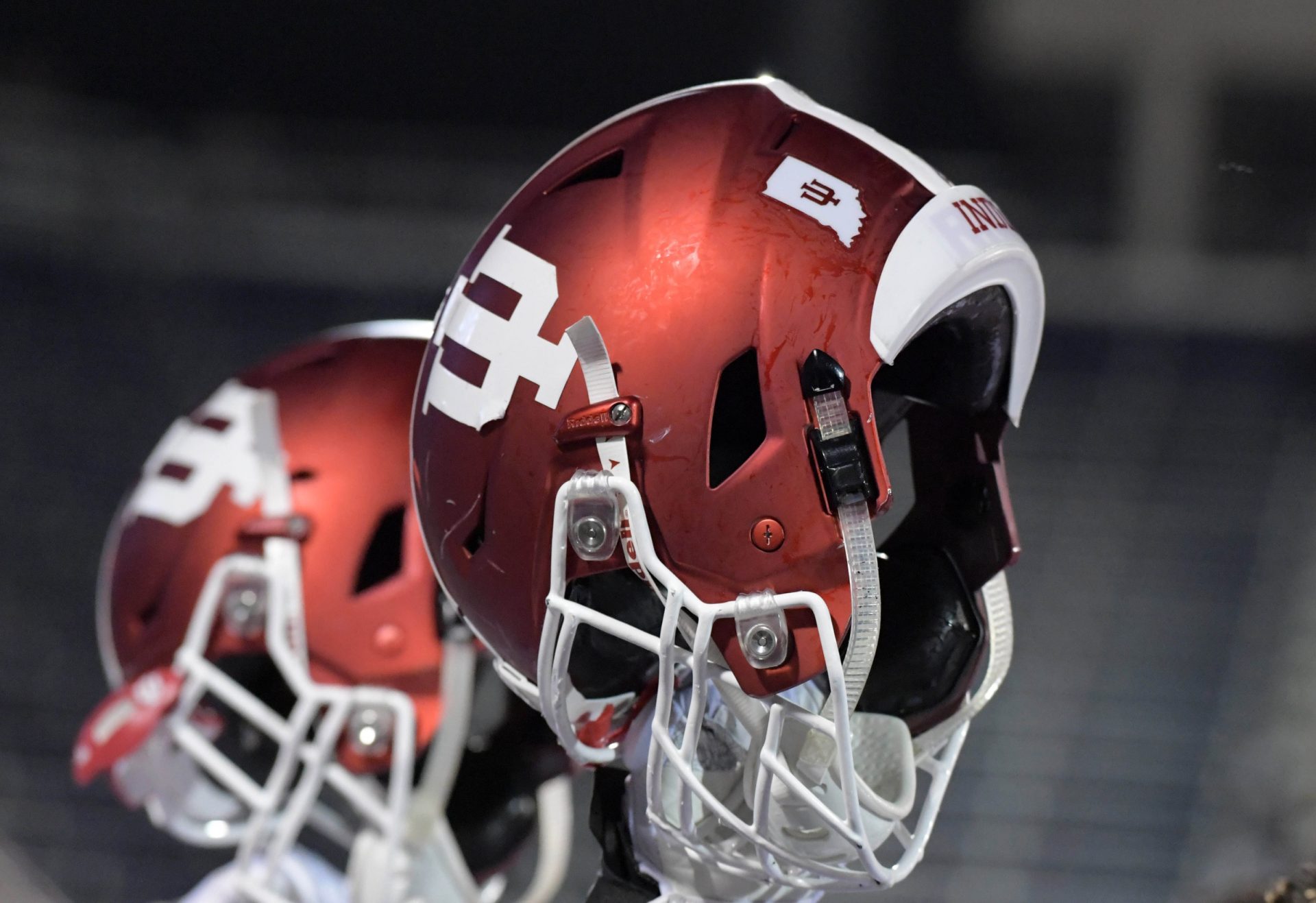College football is unique for several reasons, chief among them the pageantry and pride shown for programs by alumni and fans alike. No amount of pageantry would be complete without the role of mascots.
There are over 134 different teams in FBS, with as many varied and different backgrounds. Uniquely, Indiana is the only school represented by the Hoosier at the Division I level. How did the mascot come to be, and in what ways does the history help tell the story that it now represents? Let’s take a look at the history.

Who(or What) Is the Indiana Hoosiers Mascot?
Technically, Indiana doesn’t have an actual mascot, but the school is represented by the Hoosier. What exactly is a Hoosier? It is the official demonym, or identifier for a group of people who live in an area, for those who live in the state of Indiana.
The origin of the term “Hoosier” is up for debate. Historically, there is no clear origin story, but it’s one of the most popular and unique terms in American experience.
The first written record of the term came via a poem written by John Finley of Richmond, “The Hoosier’s Nest,” in 1833. Other spellings of the term included “Hooshers.” In fact, Finley originally spelled the name as such, but as the term caught on nationwide, the traditional spelling took root.
Several stories exist as to how the term came to be, but if Occam’s razor has anything to say about it, the explanation that it was a reply or response of “Who’s yere (here)?” tinged in an Indiana accent might be the truth.
Whether the school or the term has been around longer is also up for debate, but in 1820, State Seminary was established in Bloomington. By 1829, the school had been renamed Indiana College and then finally Indiana University in 1838.
Why Is the Hoosier the Mascot?
Indiana doesn’t have an official, physical mascot, but it’s not for lack of trying.
In 1908, the string of temporary mascots began with the owl and accompanying “Hoo, Hoo, Hoosiers!” cheer but was abandoned the next year for a raccoon. In 1912, former athletic trainer “Bernie” Bernstein’s toddler child was the mascot until an eagle named Jim Watson replaced the child in 1916. Unsurprisingly, the mascot was soon abandoned.
MORE: Simulate the College Football Season With CFN’s College Football Playoff Predictor
A pair of dogs stole hearts from fans long enough to be considered, one a collie in 1935 and the other a bulldog named Ox who almost solidified the job in 1959. It was rumored that the bulldog’s affiliation to a particular fraternity house made him ineligible, and thus, he didn’t make the cut.
After 40 years of failure, the great American bison, an animal native to Bloomington and rooted in the Indiana state seal, became the official mascot in 1965. Sure to be the solution, the bison was adopted by a legendarily iconic local restaurant called Nick’s English Hut where it has continued to be featured despite the university dropping the bison four years later.
In 1979, the school tried to introduce a mascot by the name of Hoosier Pride. A strange cross between the Nebraska Cornhusker and an Industrial Revolution railroad tycoon, the Hoosier Pride figure was roundly ridiculed and abandoned by the end of the year.
While a physical mascot may never become a mainstay for Indiana University, few nicknames are as unique and representative as the Hoosier is to the folks from Bloomington and the state of Indiana as a whole.
College Football Network has you covered with the latest news and analysis, rankings, transfer portal information, top 10 returning players, the 2024 college football season schedule, and much more!

